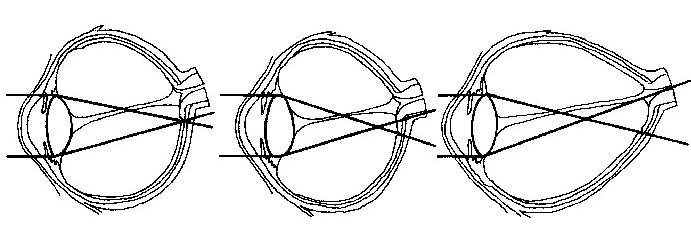
Notions, Potions and Nostrums
Part II
We follow the descriptions of various self-help remedies and regimes given in our last issue with another "batch" of suggestions from our editorial team and other sources. We would be delighted to hear from readers with further examples of ways and means of dealing with our aches and pains, particularly those "natural" remedies they may have absorbed with their mothers' milk - or shortly afterwards - that is, lingually or linguistically.
And we will follow our previous practice of providing some articles in our main section amplifying the introductions given here.
Once more we both provide - and invite from others - sceptical responses.
[Click on subject headings to be taken directly to the article - or simply scroll down the page]
The Bates Method of Eye Therapy
[1] Headaches
[2] Insomnia
[3] Arthritis
The Bates Method of Eye Therapy
What is perhaps the most surprising element of this system for the correction of eye trouble is that Dr. William H. Bates had been an oculist since 1885, he wrote his first book on the correction of defective vision in 1920, his method has been used successfully by hundreds of thousands of people; yet it is still widely unknown, and opticians, oculists and optometrists continue to practise their lucrative professions with no apparent concern that the ghost of Dr Bates will bother them.
Dr Bates was a graduate of Cornell University and the College of Physicians and Surgeons of Columbia University. He was a member of the staff of the New York Eye and Ear Infirmary: a respected man amongst this eminent body of men in this field of work. In 1920 he published The Cure of Imperfect Sight by Treatment Without Glasses - a rather rare tome nowadays. In 1944 his Good Sight Without Glasses* was a much more accessible work that was subsequently expanded by his assistant Dr Benjamin in his own work Better Sight without Glasses.

Normal Eye Hypermetropic Eye (Orthodox) Hypermetropic Eye (Dr Bates)
The difference between orthodox ophthalmic theory and the Bates theory is shown above. Orthodox theory holds that accommodation (focusing) of the eye is accomplished only by relaxation of the ciliary muscle, which enables the lens to assume a variety of shapes and focal lengths, thereby focusing on objects both far and near. In Bates's theory, the lens remains fairly constant in shape, but the eyeball changes its position, owing to action of the various extrinsic muscles of the eyeball.
Bates taught that the cause of practically all refractory eye problems - those corrected by the fitting of eyeglasses - was due to eyestrain. This was particularly true in younger persons, and he also taught that the best treatment of these errors was by relaxation and the elimination of strain rather than by merely placing a positive or negative lens in front of the eye so that the patient could see more clearly despite his strain.
Dr Bates wrote: "After people once begin to wear glasses, their strength in most cases has to be steadily increased in order to maintain the degree of visual acuity secured by the aid of the first pair. Persons with presbyopia who put on glasses because they cannot read fine print too often find that after they have been wearing them for a time they cannot, without their aid, read the larger print that was perfectly plain to them before." [Good Sight Without Glasses]
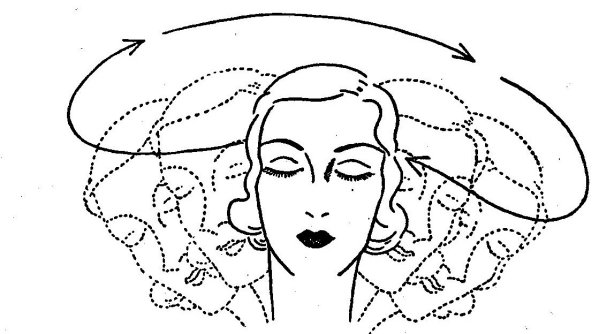
Relaxing the neck
Bates argued that most refractory eye problems are caused by straining the sight. Many of his proposed eye exercises are concerned with relaxation and since the pressures on our mental wellbeing are conveyed to the body via blood vessels and nerves through the neck, he recommended relaxing the neck muscles. Best accomplished while seated in a comfortable chair, with feet flat on the floor and the arms hanging loose, the head should be rotated very slowly from one side of the body to the other, making as large a circle as possible with the head.
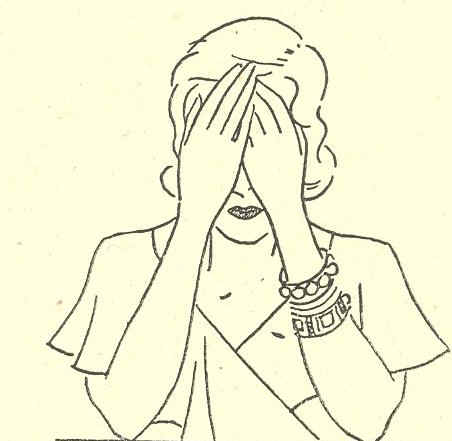
Palming
Palming is certainly the most effective of all the Bates suggested exercises and is useful for more than simply improved eyesight, but also for general relaxation. It can be done virtually anywhere at any time, for any length of time, and will relax the eyes, the body and the mind. While seated, with elbows resting on a table, form a cup with the palms of the hands and cover both eyes. Do not put pressure on the eyes themselves, but shut out all light. An indication of how effectively improvement is being produced will be evidenced by the degree to which colour is eliminated while palming. At first you may see vivid colours and will certainly see grey. While palming you should "think black"; try to envisage total blackness; give yourself a black image to aid this, say black velvet. As your eyesight improves so will the blackness increase.
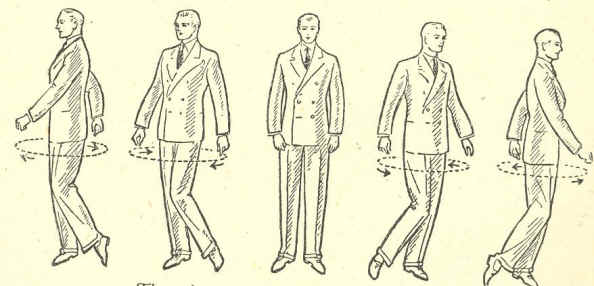
The Swing
Swinging is another way in which to relax the body and thereby soothe the eyes and the entire nervous system. Standing erect, the entire body relaxed, arms hanging loose, feet slightly apart, the body should sway from side to side with the arms swinging. Apart from any improvement to eyesight, this is a great exercise for simply relaxing the body and the mind, and can be done anywhere.
* It had earlier been published in the United States (Henry Holt & Co) under the title The Bates Method of Better Eyesight Without Glasses.
Articles on this subject: The Eyes Have It
Sceptical Response: Bates Eye Therapy
This was the discovery of Dr Edward Bach (1886-1936), a physician and bacteriologist. In observing the behaviour of factory workers under threat of dismissal, he theorised that their fears, tensions and uncertainties unbalanced the harmony between mind and body. His favourite dictum was "There are no diseases, only sick people." For him the patient was more important than the disease.*
He therefore set about trying to find some cure for the patient's mental state rather than the physical complaint that had been diagnosed. In due course he discovered - claiming that he had arrived at this discovery intuitively - that a variety of wildflowers had the ability to heal these negative mental conditions. He claimed that by physical contact with a plant or flower he could intuitively discover its healing powers. Flowers contain the plant's life force, or vibrations. Bach flower therapy enables the transfer of these vibrations from the flowers into water, with the help of sunlight, by non-destructive means. Sunlight has the power to transfer a plant's life force into water. Hence morning dew is said to be full of vitality and an early morning walk in the midst of this dew can cure a number of diseases.
In this system as prescribed by Bach Flower therapy, flowers are kept in spring water and exposed to the sunlight for many hours. Alcohol is then added to the water to stabilize the vibrations. Edward Bach believed that he could intuitively divine what plants or flowers could be used to produce essences for specific disturbances.
38 such essences were developed, each one used to balance a specific emotional pain or, where the lack of balance is particularly advanced, to remit the physical symptoms.
*He was anticipated, of course, 23 or so centuries earlier, by Hippocrates.
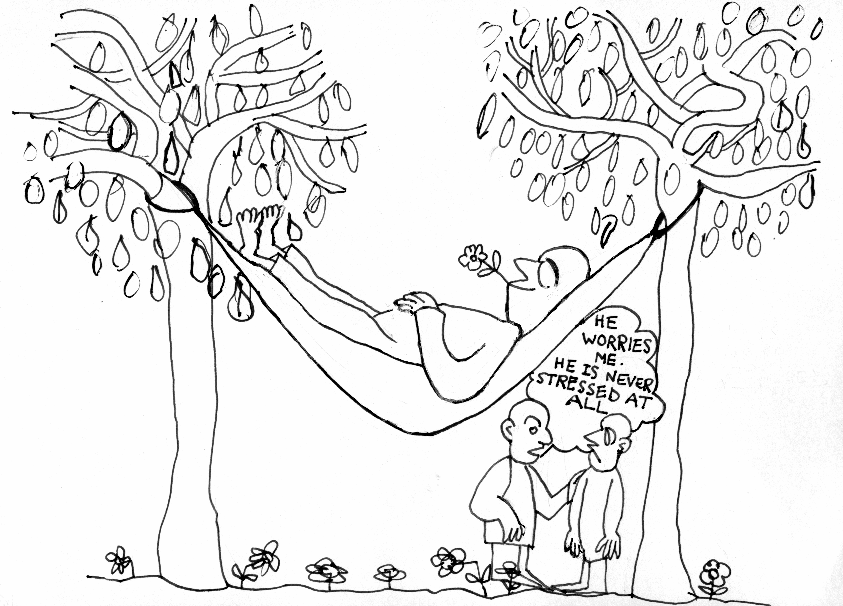
Illustration by Yaron Livay - reproduced from Peace of Mind is a Piece of Cake (Crown House 1998)
See letter from: Serena Smith
Sceptical response: Flower Therapy
[1] Headaches
The vast majority of headaches are not medically serious. Most can be controlled by the use of simple medications - and in the case of tension headaches, by altering habits or lifestyles. Although headaches can be very uncomfortable and temporarily disabling, most are not associated with serious illness. They can often be relieved very simply. In some cases, however, they can be associated with more serious conditions.
For example (and rarely) headache is a symptom of a dangerous condition such as cerebral aneurysm, brain tumour, stroke, meningitis, or encephalitis. Very high blood pressure can cause headaches and this situation is a medical emergency. If you have any doubt about your headache, contact your physician.
The most common type of headache is "tension headache." Tension headaches generally develop gradually, often involve the entire head as well as the neck and shoulders. They probably are not actually caused by increased muscle tension, although muscle relaxation techniques can be very useful in treatment. Most people get tension headaches occasionally and these can usually be treated simply. Some people get them often, but there are usually some useful interventions to help decrease the number of sick days.
Migraine headaches are "bad headaches." With classic migraine, the headache is preceded by a feeling that a headache will develop (prodrome) followed by visual phenomena such as dark or bright spots, streaks of light, or tunnel vision (aura). The headache then develops, usually on one side. It is throbbing in nature, accompanied by nausea and increased sensitivity to light and noise.
Most people with migraine headaches do not experience prodrome or aura. Common migraine headache, like classic migraine headache is treatable and often preventable.
Cluster headaches are headaches lasting minutes to hours that occur day after day at a similar time over a period of weeks. They are sharp. People with cluster headaches often describe the pain as similar to an icepick.
They are more common in men, and are more difficult to treat than most headaches. Interestingly, oxygen therapy will often stop a daily cluster headache. Many of the medications used to prevent or treat migraine headaches are used to treat cluster headaches.Sinus headaches are those frontal headaches that some people experience with sinus infection and with changes in the weather. Allergies can also provoke them.
Relaxation and related stress reduction therapies can diminish the frequency and intensity of headaches. Alternative therapies used for headache management include hypnosis, biofeedback, meditation, visualization and guided imagery, acupuncture, acupressure, yoga and other physical relaxation exercises.
See a health care professional on an urgent basis if any of the following occur:
Severe, sudden headaches that seem to come on like "a bolt out of the blue."
Headaches that are accompanied by a loss of consciousness, alertness or sensation, confusion, or other neurological and/or personality changes.
Headaches that recur in one particular area such as an eye, temple etc.
Headaches that recur and are of high intensity or frequency.
Headaches that are accompanied by neck stiffness and fever.
Headaches that are associated with head injury.
There is a change in the nature or frequency of headaches.
The worst headache in one's life.
Temporary change in vision or visual acuity may simply be a sign of migraine headache but deserves special attention if new.
Here are some of the suggested Natural Health remedies for some different types of headache:
Tension headaches: Relaxation is the automatic advice; the stress may be very effectively and speedily reduced by employing two of the exercises given in the Bates Eye Therapy - rotating the neck and palming.
Migraine headaches: Recommended as a palliative is niacin, a B vitamin. It should be taken at the very first symptoms, even when roused from a deep sleep. It may produce uncomfortable symptoms such as an intense flush, reddening of the body, a burning or itching sensation, but provided the dosage recommended by a doctor is taken, it is harmless, and if no flush occurs within ten minutes of taking, then a second dose is to be taken. Once the flush is produced, the migraine will vanish.
Cluster headaches will usually respond to similar treatment to migraine headaches.
Sinus headaches may be treated by "sensible" doses of Vitamin A and/or large quantities of Vitamin C.
See Article on the subject: Doing What Comes Naturally
[2] Insomnia
It has been estimated that one in three adults suffer from insomnia and women are more likely than men to experience it. A lack of sleep will adversely effect your physical and emotional health and will leave you feeling tired, irritable, with a decrease in your ability to concentrate and make rational decisions. You will become more accident-prone and your immune system will be less effective in fighting off infections.
The most common cause of insomnia is stress, anxiety, linked with physical and/or psychiatric disorders such as pain, illness, asthma, and depression. Environmental and lifestyle factors may also cause insomnia such as too much light or noise, an uncomfortable bed, drinking too much coffee or alcohol or eating late. Some post-menopausal women are prone to sleep problems.
Of course, you could always ask your GP to prescribe drugs to help you sleep but a proper diet and changes in your lifestyle may not only be more effective, but certainly longer-lasting. Changes in your lifestyle, diet and eating habits can work miracles on your sleeping problems, especially if stress is the main cause. When under stress the hydrocortisone and adrenaline produced in the body increases and stimulates the fight or flight syndrome, thus keeping you alert and unable to fall asleep.
A number of relaxation techniques such as meditation, visualisation, and gentle exercises such as yoga can be tried to help decrease stress and thus decrease the build up of these stress hormones. Physical exercise raises your core body temperature and increases your adrenaline levels. Exercise should take place in the afternoon or early evening since hormone level lowers after five or six hours, thus promoting a deep sleep. Exercising immediately before going to bed will inhibit sound sleep.
The food we eat may also effect how well we sleep. Protein-rich foods, large meals, caffeine and nicotine should be avoided at least four hours prior to going to bed. Drinking alcohol before bed may also lead to problems since once the alcohol metabolises it disrupts the restorative levels of sleep.
Calcium, magnesium and zinc as well as vitamins B6, B3 and C supplements can help calm the nervous system and so help treat insomnia.
The actual set-up of your room may also effect your sleeping habits. Avoid bright colors and different patterns in the room and radios and alarm clocks should be kept at least three feet away. Soft calming pastel colours are best and there should not be a drastic difference in the patterns of your bedspread, curtains and carpets. Place your bed near a wall and it is best if you can see your bedroom door (directly or through a mirror). Your room should also be tidy before going to sleep. Use dim lighting (or candles), have adequate ventilation and the room should be at a comfortable temperature. The most important item in your room, if you want a good nights sleep, is your bed. A good-quality mattress and pillow are essential. It is recommended to replace your bed every ten years. (Recommendation was perhaps made by the Association of Furniture Manufacturers!}
Establishing a routine before bedtime is a good way to program your mind ‘that it is time to sleep’. Several ways to’ let go’ and relax before bed is not going to sleep right after work or watching TV in bed. Getting a massage with calming essential oils will increase the effect, taking a warm bath, having sex, drinking a warm cup of herbal tea or taking a herbal supplement. Go to bed and wake up at the same time every day and try reading or listen to soft music before going to bed. Finally, try burning camomile or frankincense in an oil burner for about an hour before bed.
[3] Arthritis
The two main forms of arthritis are osteoarthritis and rheumatoid arthritis, and of these the former is the more prevalent. One practitioner has listed the following as constituting the primary causes of osteoarthritis: Malnutrition; Prolonged physical stress; Obesity; Alkalosis; Glandular insufficiency; Calcium deficiency; Shortage of hydrochloric acid. Rheumatoid arthritis may be allergic in origin, caused by a lack of raw foods, or due to a hormonal imbalance (adrenal, liver, pituitary, and sex glands).
The most widely recommended product for sufferers (or for prevention) is calcium. When the calcium in the blood becomes too low, the system will steal it from bones in other parts of the body; the resultant weakening of the bones can lead to osteoporosis as well as osteoarthritis.
For rheumatoid arthritis B and C complex vitamins are recommended.
Some herbs have also been found efficacious by sufferers, including ash, lucerne and comfrey. In East Asia ginseng has also been prescribed. And in at least one reported case, Chaparral was found to have produced a profound cure in a chronic sufferer who had been taking "calcium, Vitamin D, kelp, magnesium, and various herb teas" with only slight benefits.
Articles on this subject: Doing What Comes Naturally
Sceptical Response: Naturopathy